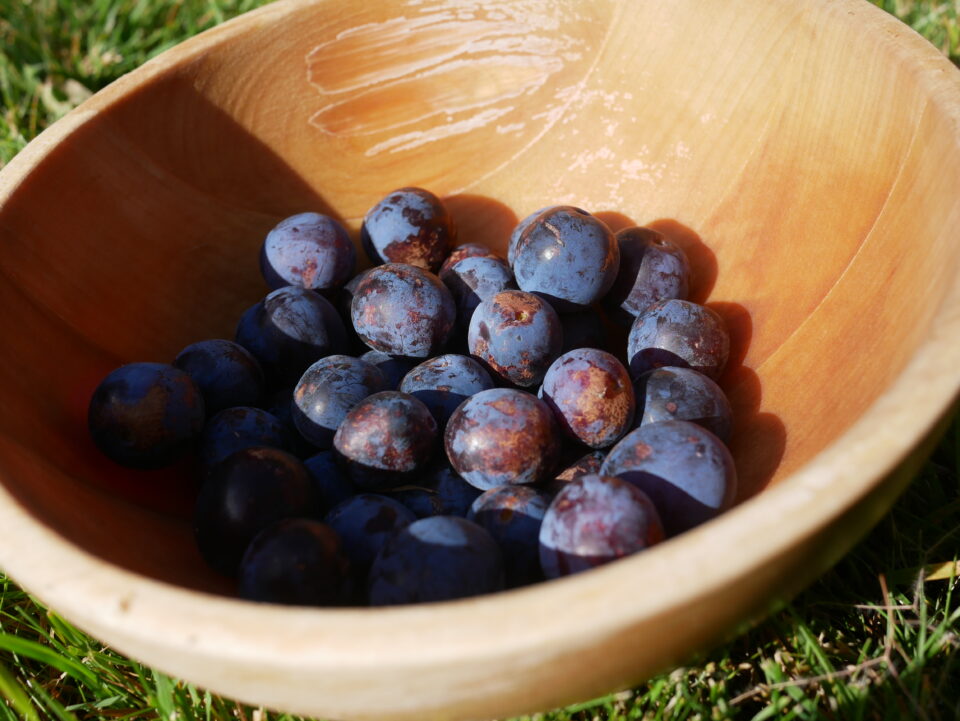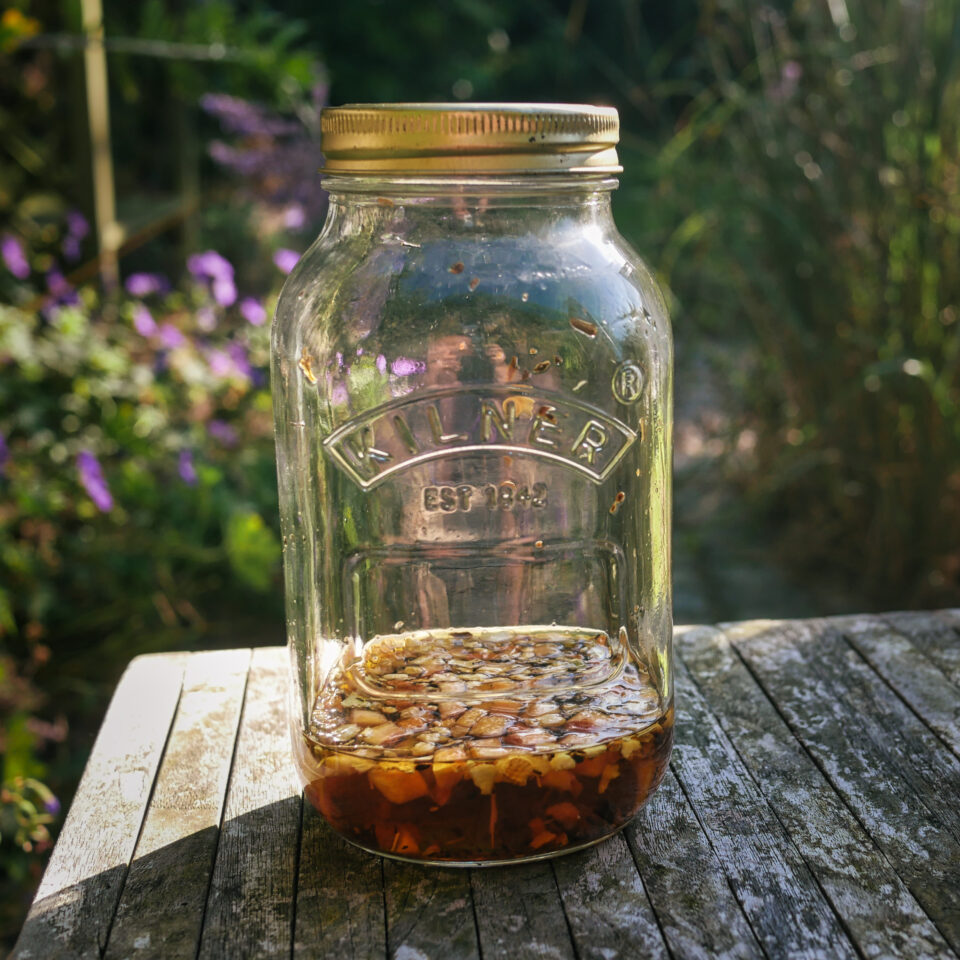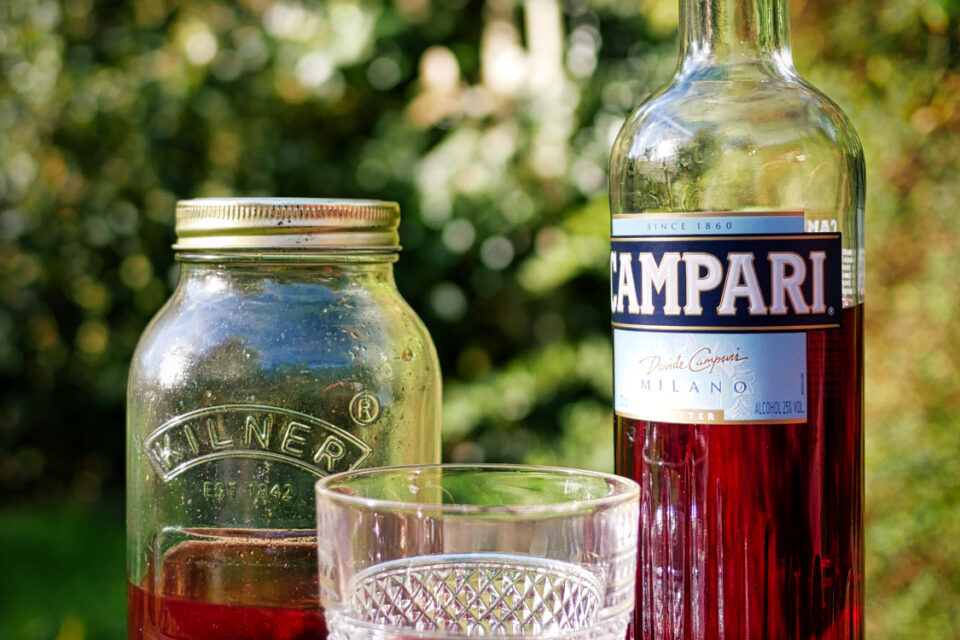
Surely the most well known and popular amaro, Campari dates back to 1860. Its distinct red hue and bracing bitterness have made it a classic ingredient both in simple drinks like Campari and soda and in cocktails like the negroni. Nowadays the Campari Group owns many brands including Aperol, Cinzano, Grand Marnier and even the Appleton / Wray & Nephew rums. Like many other amari, there is a mystique around the secret recipe, known to only a few people who mix a concentrate in Milan that is then shipped to factories around the world. It definitely contains bitter orange peel among the 68 ingredients, and many articles also assume chinotto (small, bitter oranges from Italy) and cascarilla bark (a Caribbean shrub), although there are as many theories as to other ingredients as there are articles!

The recipe below is taken almost entirely from the excellent attempt to reproduce the Campari taste by Sam Schick, but with the addition of damsons that are then macerated for a couple of months. The result is richer, a little sweeter and less bitter than Campari, but quite a successful attempt. It will work well in a winter time spritz, or to make a more unusual negroni. The damsons also provide a wonderfully deep colour, so there’s no need for the original red dye used by Campari (carmine, the pigment made of dried cochineal beetles), nor its modern day replacement. Interestingly the recipe contains neither chinotto nor cascarilla bark, but neverthless is close to the original.
For a damson negroni, combine this damson campari with damson vermouth and gin in equal quantities. For a much sweeter triple damson negroni, use damson gin instead of regular gin.
Home-made damson campari
1.4
litreA recipe for a delicious home-made damson campari for cocktails from a negroni to a simple spritz. The bitter ingredients are gentian, wormwood, angelica and cherry bark, and the main other flavours are different citrus peels, ginseng and of course damsons.
Ingredients
- Infusion
20g gentian root
15g dried lemon peel
15g dried orange peel
Chopped peel of 1 fresh grapefruit
10g rhubarb root (not the same as the rhubarb stems you’d normally use)
10g angelica root
7g wormwood
7g dried ginseng root
7g wild cherry bark
700ml grain neutral spirit (70% alcohol)
- Syrup
300g Demerara sugar
700ml Water
40 Bay leaves (optional – I use this as my bay tree provides an infinite supply)
- Final maceration
500g – 1kg whole damsons, including stones (depending on whether you have extra to use up)
Directions
- Weigh and add the infusion ingredients to the spirit. Shake and leave somewhere dark for 1 week. This extracts the various flavours, and the result will be a dark brown evil looking liquid that smells very strong. Don’t worry!
- After a week has passed, filter the spirit using fine muslin or a fine coffee filter
- Make the sugar syrup by mixing the ingredients and bringing to a boil until the sugar is completely dissolved. Refrigerate until cold. This is fine to leave for day or two in the fridge if you want more of the bay leaf flavour.
- Combine the spirit and the syrup. Due to all the citrus used, it will invariably go cloudy (the “louching” effect), even if you’re careful and both liquids are cold when mixed slowly.
- I didn’t bother with clarification this time – see my recipe for damson amaro (Montenegro style) where I had a go at this extra step if you fancy trying it. There’s lots of advice on Reddit r/amaro’s wiki on ways to remove cloudiness.
- Add the damsons, and leave in a dark place for around 2 months (more doesn’t hurt).
- At this point you should have an intensely purple-ruby coloured liquid, with nicely blended and settled down flavours. Remove the damsons, filter again using fine muslin or a coffee filter, and bottle your home-made campari.
Notes
- I made a smaller quantity than that listed above, as a test. The original recipe was for 1l of spirit. I’ve scaled the recipe above to match the 700ml bottle of grain neutral spirit commonly available in the UK.
- All the weird herbs, roots and spices are generally available quite easily online, often sold as teas or herbal remedies – I’ve used Health Embassy, Valley of Tea and others.

